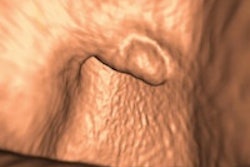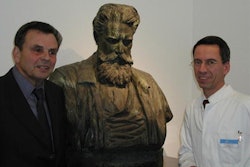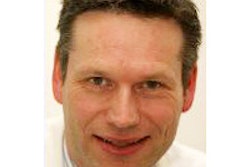
Dr. Andreas G. Schreyer, from Regensburg University Hospital, is the new chairman of the Working Group for Gastrointestinal/Abdominal Diagnostics of the German Radiological Society (DRG). In this interview, he describes his plans and the challenges he will face during his term in office.
What are your plans for your term in office from 2014 to 2016? What challenges do you see ahead?
We have some very exciting prospects ahead of us. Membership has risen and many members are playing an active part in the working group; there are initiatives, suggestions, and visions.
 We need to offer courses in radiology for nonradiologists so they are not mere "hobby radiologists," according to Dr. Andreas G. Schreyer.
We need to offer courses in radiology for nonradiologists so they are not mere "hobby radiologists," according to Dr. Andreas G. Schreyer.One important plan is the development of guidelines. This has already taken place in the past in a passive way, but we, as a working group, now want to take an active role in the development of guidelines. At the 2014 German Radiology Congress (DRK) in May, I put forward my own thoughts about this, and two major ideas emerged.
Firstly: virtual colonoscopy or colonography, the idea being the development of an interdisciplinary guideline, if possible an SK2 guideline, initiated by our working group and the DRG. The aim here is to develop an evidence-based guideline, with literature reviews and complete transparency.
The second major medium-term project is that I would very much like to initiate a guideline on abdominal imaging, the reason being that if you ask 50 hospitals how they produce images for a particular disorder, you will get 47 different answers -- it's anything but a uniform approach. This is quite astonishing; after all, we radiologists assiduously write our papers, where we arrive at a consensus about how imaging should best be done.
However, hardly anybody works this through systematically in an evidence-based fashion. So, I would very much like us to answer the question: How is evidence-based imaging to be done in line with the current state of radiological research? This is my great wish and therefore my principal objective.
An abdominal imaging survey has quite recently been started. What exactly is in that survey and what is its aim?
With this survey we want to ascertain the status quo. The members of the working group have already been canvassed, and now all the other members of the DRG are to participate. The aim is to establish how imaging is actually done when resolving issues arising in abdominal diagnostics.
The result is intended to form a basis for discussion for approaching the grand project. The survey will be sent to all the DRG members and is expected to run until the end of September. The results will initially be summarized by the working group and then made available to the DRG. This can be the basis of future joint discussion.
Which medical specialties overlap with gastrointestinal and abdominal diagnostics? Is interdisciplinarity relevant to the sector?
Interdisciplinarity is the guiding spirit of radiology and also, therefore, of abdominal radiology, because in practice there is very little standalone radiology. In our field, we always depend on other specialties, which probably make us veterans of interdisciplinarity.
Of course we have our core areas: internal medicine, gastroenterology, and abdominal surgery -- these are especially important for us. Here, we need to establish particularly good contacts with the relevant specialist societies, as we are quite properly doing. Also, we make our presence felt at congresses and conferences of other specialties.
Our working group, and also my clinic here at the hospital, have a tradition of offering courses in radiology for nonradiologists. We don't want to teach other disciplines to be mere "hobby radiologists;" we want them to be able to find their way around our imaging armamentarium and to know what state-of-the-art abdominal imaging is. In short, without interdisciplinarity, nothing is possible.
What do you envisage for the gastrointestinal/abdominal diagnostics sector? Where does the road lead to?
I think we are already following the correct path. We should involve our members more and also attract new members. Many young colleagues work in the core sector of radiology and abdominal radiology, and we want to attract these colleagues to the working group. We must also have the correct self-image and self-definition. Ours is not the sort of working group that tries to attract attention initially through extra certification, because we represent "core radiology;" we are a sector that should be more of a network for researchers and clinicians interested in abdominal radiology.
The route should lead in this direction: toward the Working Group becoming an active clinical and research platform. We should not merely give answers to guidelines -- we should ourselves, proactively, develop guidelines and recommendations. Researchers from several university hospitals in Germany should come together, ask questions, and make evaluations together. This would be my dream. We have already achieved this in such small projects as the current survey. My great wish for the group's future is for it to becomea network platform for interested radiologists.
Finally, what else can you tell us about the survey on gastrointestinal imaging in Germany?
Our small survey will enable us to form a picture of radiological routine abdominal imaging in Germany, focusing on CT and MRI protocols. The online survey will take about 10 minutes to complete and should give us a better insight into how we radiologists, throughout Germany, investigate various gastrointestinal tract issues.
The survey is open to all members of the DRG and our working party, and the results will be disseminated to all our members soon after completion and are chiefly intended as a basis for discussion about further initiatives on potential future guidelines on imaging.
To avoid the misunderstandings that occurred among some members in the survey's preliminary phase, it should once again be made clear that the survey is in no sense a "guidelines poll," but is merely intended to ascertain the reality of care in German radiology.
You can go directly to the German-language survey here.
Editor's note: This is an edited version of a translation of an article published online in German by the DRG. Translation by Syntacta Translation & Interpreting.



















